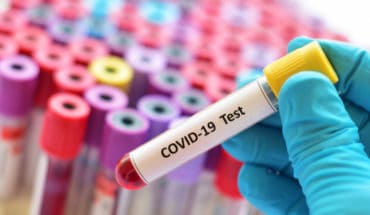Tarantula venom could provide new treatment avenue for type 2 diabetes:
- Research presented at DUKPC 2021 reveals molecules found in tarantula venom could offer promising new treatment option for type 2 diabetes.
- Molecules found in tarantula venom reduced blood sugar levels and decreased food intake in mice
New research presented today at the Diabetes UK Professional Conference (DUKPC) 2021 has identified that molecules present in tarantula venom could offer a new treatment option for people living with type 2 diabetes. The early-stage research, funded by Diabetes UK, found that a molecule called ΔTRTX-Ac1 was able to reduce blood sugar levels and decrease food intake in mice.
Diabetes currently affects 4.8 million people in the UK – around 1 million of whom have undiagnosed type 2 diabetes. Around 90% of people with diabetes have type 2, where the insulin made by beta cells in the pancreas doesn’t work properly, or the pancreas doesn’t produce enough insulin. This means that blood sugar levels in people with type 2 diabetes can rise to dangerous levels and they usually need medication to manage their condition. Treatments include insulin, tablets such as metformin and other injectable medications to stimulate the pancreas to produce insulin or help with weight loss.
The team of researchers led by Professor Nigel Irwin at Ulster University previously uncovered that the venom of the Mexican blonde tarantula can increase insulin production and lower blood sugar levels, but why this happens has not been clear until now. These new findings, by PhD student Aimee Coulter Parkhill, have pinpointed that a molecule called ΔTRTX-Ac1 could hold the key.
The researchers developed a synthetic version of ΔTRTX-Ac1, to uncover whether it has the same effect on insulin-producing beta cells of the pancreas in lab conditions, as well as in mice.
The researchers found that ΔTRTX-Ac1 increased insulin secretion from pancreatic beta cells in the lab more than two-fold. The venom molecule may be controlling channels on the surface of beta cells, acting as the gatekeeper that allows other molecules to flow in and out of the cells. ΔTRTX-Ac1 also improved beta cell growth, and didn’t damage the cells, making it a potential future treatment that warrants further investigation.
When injected into mice alongside glucose, ΔTRTX-Ac1 steadily reduced blood sugar levels over the course of an hour, suggesting it is able to ramp up insulin release in mice, as well as in cells in the lab. ΔTRTX-Ac1 also reduced food intake in mice, suggesting it may act to suppress appetite.
Next, the researchers plan to uncover exactly how ΔTRTX-Ac1 functions, as well as assessing its effectiveness over longer periods of time in animal models of diabetes.
Aimee Coulter Parkhill, PhD student at Ulster University, said:
“Tarantula venom contains millions of biologically active molecules that may have therapeutic potential. This research highlights one specific molecule from the venom of the Mexican Blonde tarantula which shows promise in treating diabetes. We are excited to follow up on our pilot studies to understand how ΔTRTX-Ac1 could in future help people living with type 2 diabetes.”
Dr Elizabeth Robertson, Director of Research at Diabetes UK, which funded the study, said:
“This innovative research has revealed a promising new treatment avenue that could in future help improve or restore beta cell function in people living with type 2 diabetes. It is hoped that research such as this will ultimately lead to the development of new therapies to help people with type 2 diabetes manage their condition better and reduce their risk of serious diabetes-related complications.
“We look forward to further studies to explore whether tarantula venom-based therapy could be developed to be effective and safe in people, providing a new weapon in the armoury for treating type 2 diabetes.”
For more information on diabetes visit diabetes.org.uk.
- Gut microbiome could delay onset of type 1 diabetes - 3rd April 2025
- The da Vinci 5 Robot Is Set To Transform Bariatric Care: - 31st March 2025
- Beyond money: the hidden drivers fuelling child food insecurity - 31st March 2025






